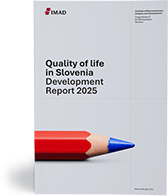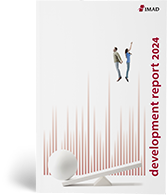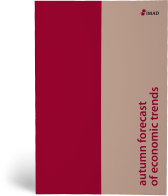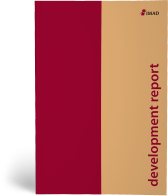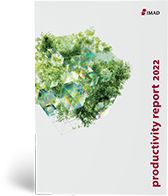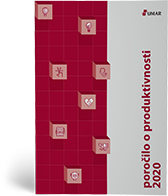Environmental sustainability and green development
To ensure that everyone can live a decent life within the limits of our planet, economic growth should be decoupled from the use of raw materials and energy, ensuring net zero emissions of greenhouse gases. The success of the transition to a low-carbon circular economy can be measured in terms of emissions, energy and material productivity. Slovenia lags behind the EU average in all three areas. Of particular importance is the conservation of biodiversity and natural resources, including through sustainable agriculture and forestry. In order to achieve the ambitious targets set, it will be crucial to use all available financial resources effectively and to achieve a system change towards clean and efficient solutions through new knowledge, innovation and sustainable investments.
Quality of life in Slovenia – Development Report 2025
Slovenia ranks in the top half of EU Member States on most global composite indicators of quality of life.
In the area of social development, the gap between Slovenia and the EU in terms of the population's material well-being has narrowed in recent years, alongside positive developments on the labour market. Income, wealth and wage inequality remain among the lowest in the EU, as do the AROPE…
Development Report 2024
In Slovenia, a robust post-COVID-19 economic recovery, supported by improved conditions in trading partners and substantial fiscal policy measures, was followed by a slowdown in economic growth and an increase in inflation in 2022 and 2023 in the context of the energy crisis. The impact of rising cost pressures on competitiveness and the population's lower purchasing power was cushioned by…
Autumn Forecast of Economic Trends 2023
Economic growth is slowing this year, especially in the export-oriented part of the economy, growth in private consumption is also lower than last year, while construction investment continues to increase. In its Autumn Forecast, the Institute of Macroeconomic Analysis and Development (IMAD) forecasts real GDP growth of 1.6% this year. This is slightly lower than what was predicted in the spring…
Development Report 2023
The Slovenian economy recovered quickly from the epidemic, supported by an expansionary fiscal policy. GDP per capita in purchasing power standards reached 92% of the EU average last year, the highest level ever recorded. The measures taken to support the population during the epidemic and the period of rising energy prices significantly mitigated the impact of both crises on the social and…
Productivity Report 2022
Slovenia is gradually making progress in productivity and most of its key factors, but its structural development in terms of transition to innovation-driven growth and circular economy is too slow, and the modernisation and transformation processes are too shallow. This is reflected in the relatively slow narrowing of the development gap with the EU average, the still large development gap with…
Autumn Forecast of Economic Trends 2022
The Forecast was prepared under conditions of great uncertainty, mainly related to the situation on the energy markets, which is deteriorating as the war in Ukraine continues, contributing to the worsening of the economic outlook for Slovenia’s main trading partners. In the Autumn Forecast, IMAD predicts GDP growth of 5% for this year, which is 0.8 p.p. more than was predicted in the spring,…
Development Report 2022
Slovenia’s economy saw a quick rebound in 2021 with the help of massive government measures that kept the material and financial situation of the population relatively stable. The burden of the epidemic assumed by the government was reflected in a high general government deficit and an increase in general government debt, especially in 2020. The main challenge remains to overcome the development…
Productivity Report 2021
The Institute of Macroeconomic Analysis and Development, as the National Productivity Board, produced the third Productivity Report. This year's content was marked by the COVID-19 crisis in the light of the economic recovery. We point out the impact of the COVID-19 epidemic on the financial situation of companies and, in this context, the importance of intervention measures. We analysed in more…
Development Report 2021
The Development Report, an annual publication prepared by the Institute of Macroeconomic Analysis and Development, which monitors the realisation of the Slovenian Development Strategy 2030, brings important recommendations for development policy. Short-term priorities continue to be highly related to preventing the spread of the covid-19 epidemic and mitigating its socio-economic consequences.…
Productivity Report 2020
In 2018 IMAD started to carry out the tasks of a national productivity board, one of the key ones being the preparation of an annual productivity report. Productivity analyses have been part of IMAD's regular publications for many years. In addition to a detailed and comprehensive analysis of the current situation, this year's report pays particular attention to digitalisation, Industry 4.0 and…

